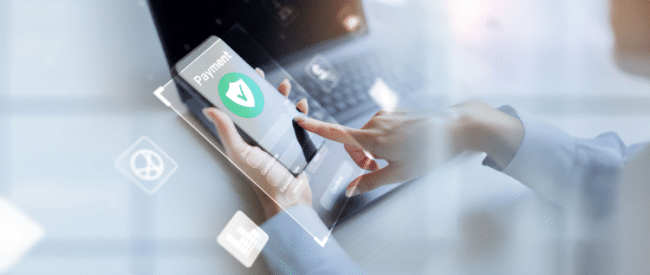How many times per day, on average, do you tap your smartphone? Think about it. Taps, swipes too. Have you got the number?
If you’re like me, your guess was off. The research firm Dscout found that people tap and swipe their phones 2,617 times per day1. That’s a million times per year.
If mobile alerts aren’t among your customer communication methods, you’re missing out.
Mobile Society
Mobile alerts, mobile billing and mobile payment channels are necessary to meet today’s consumer expectations. Faster means of contact and easier, more convenient ways to pay bills, improve the customer experience and can improve loyalty and business referrals.
For billers, digital customer communications boost contact success, and online payments speed payment processing and availability of funds. Even industries not typically quick to move on technology advances, such as healthcare, are seeing the impact. Athenahealth’s just-released Trends in Patient Pay revealed mobile channels increased by 63 percent as a share of total patient payment dollars from 2018 to 20192.
ACI Speedpay3 reports smartphones are a preferred channel for billing and payments:
- 29 percent of consumers submit bill payments
- 29 percent view billing statements
- 32 percent review account balances
For customer communications, SMS/texts and digital wallets offer exciting new delivery channels that appeal to mobile consumers.
Tapping into Texting
Nine out of 10 people open and read texts within 3 minutes of receipt4. Not only do text messages get read fast, they prompt action. When consumers receive bill notifications via text, they tend to pay the bill soon after using their mobile device.
Text messaging makes communication management quick and convenient. Some companies include personal data, some don’t, and industry guidelines may dictate. Here are text message options:
- Set up automated texts to give your customers their account balance and payment due date;
- A payment reminder with a link to their e-statement or payment options;
- Missed payment reminders;
- Confirmation of payment;
- A customer benefit or rewards club notification;
- A credit balance;
- A call center link to facilitate a callback, particularly helpful in the collections industry
What’s in Your [Customer’s] Wallet?
These days, consumers reach for their phones more than their wallets. That’s because smartphones have built-in mobile wallet applications, which three out of four consumers say they’ve used in the last year, according to mobile marketing leader Vibes.
Digital wallets hold great promise for ongoing interactions with customers. Here’s how two companies are capitalizing on the trend:
Loyalty programs
One vacation resort company relaunched its tiered loyalty program with a mobile wallet feature. The organization emailed the program announcement to existing customers, inviting them to click for their virtual membership card. The virtual card then appeared in their wallet.
API connections ensure cards receive real-time updates like reward point balances and membership expiration dates at renewal. When a customer graduates from one loyalty tier to the next, going from bronze to silver, for example, the communication app changes the color of the wallet card automatically, adds new benefits on the “back” of the card and updates offers and disclosures.
Billing statements and related communications
Customers have to add the wallet pass or card proactively, but once it’s in, companies don’t need to obtain permission for push notifications. These may include:
>Your new bill has arrived. View it in wallet. <
>Your bill is due in 5 days. Pay it in wallet. <
You can geo-target push notifications, so when the consumer is in proximity to a company or partner location, it can trigger a message with a timely reminder or offer.
Mastering Mobile Communications
There are federal regulations to meet and industry guidelines to follow concerning mobile communications, including the Telephone Consumer Protection Act and HIPAA. Moreover, companies must comply with Payment Card Industry (PCI) rules. Customers’ rights, include their required consent to receive messages from your organization with an easy opt-out process and the right to have their personal data secure and protected.
Most of us have our smartphones right at hand, and all businesses want to stay close to their customers. With mobile alerts, you’ll always be within reach.
1 Dscout – https://is.gd/IEPM60
2 Athenahealth – https://is.gd/GOxeag
3 ACI Speedpay – https://is.gd/Y2Q2Rf
4 Forbes – https://is.gd/IwiPqR
About the Author
Bryan joined Nordis Technologies in 2016 to manage and grow the company’s already-large vacation ownership client base. He also is responsible for business development and market expansion in the healthcare and financial services markets. Before joining Nordis, Bryan spent more than 21 years with Interval International, a leading global provider of vacation ownership services. Bryan graduated from Northwestern University with a bachelor of science in political science.

Bryan Ten Broek
Vice President, Business Development







